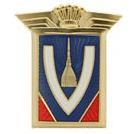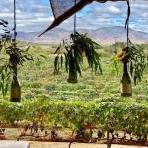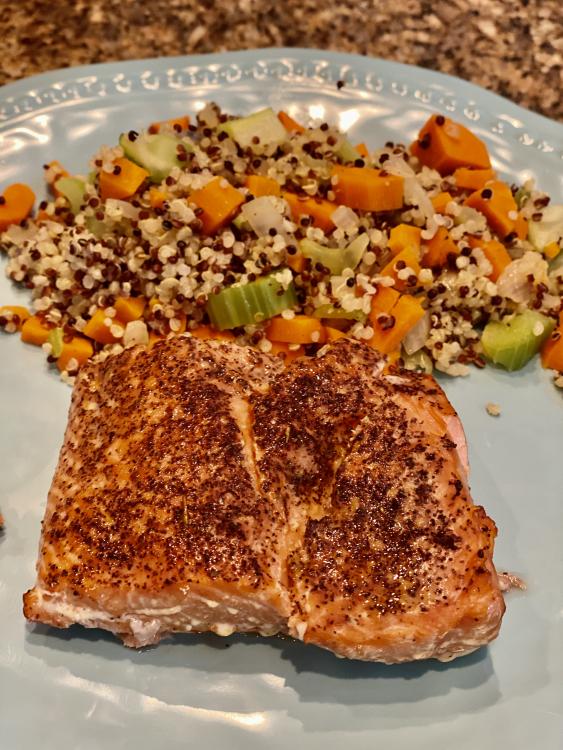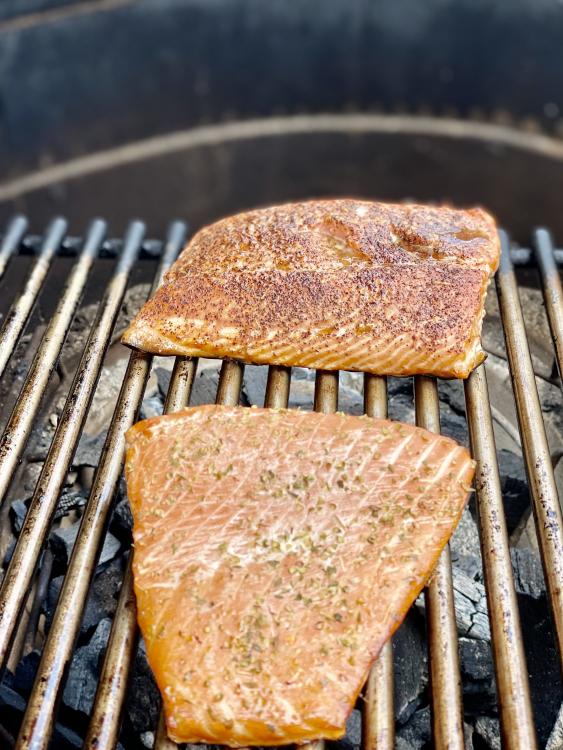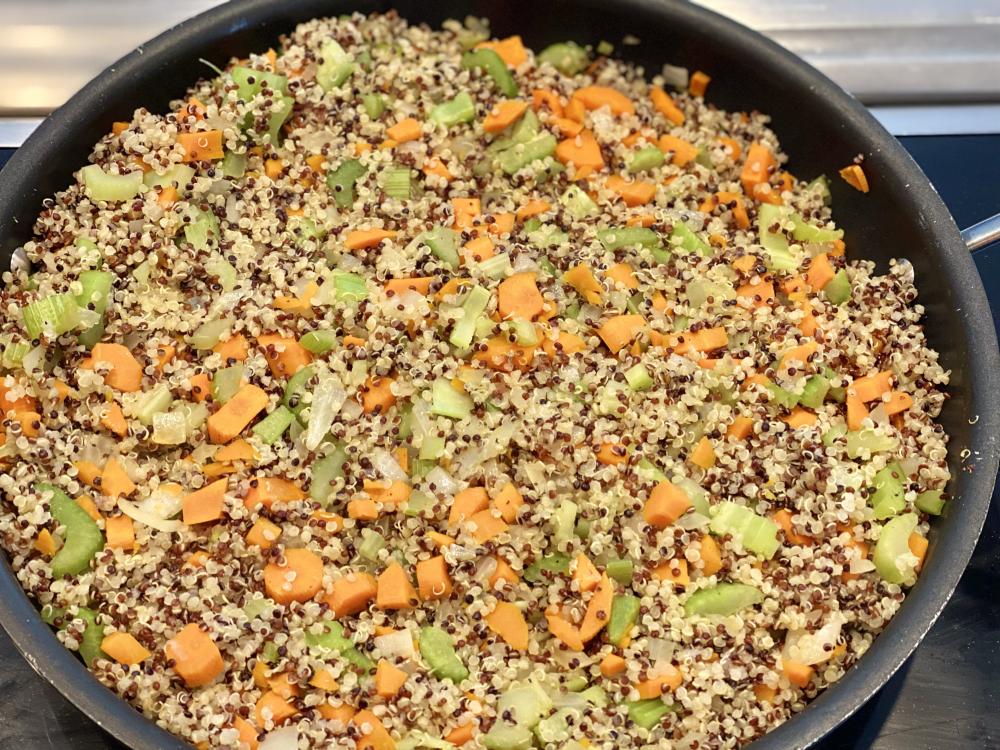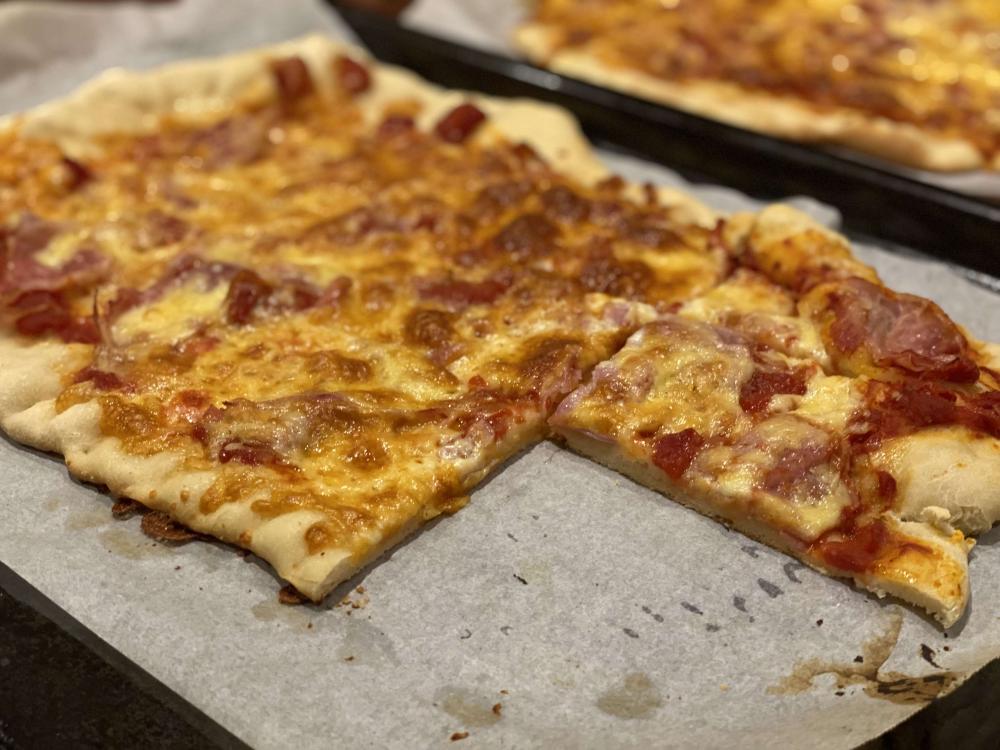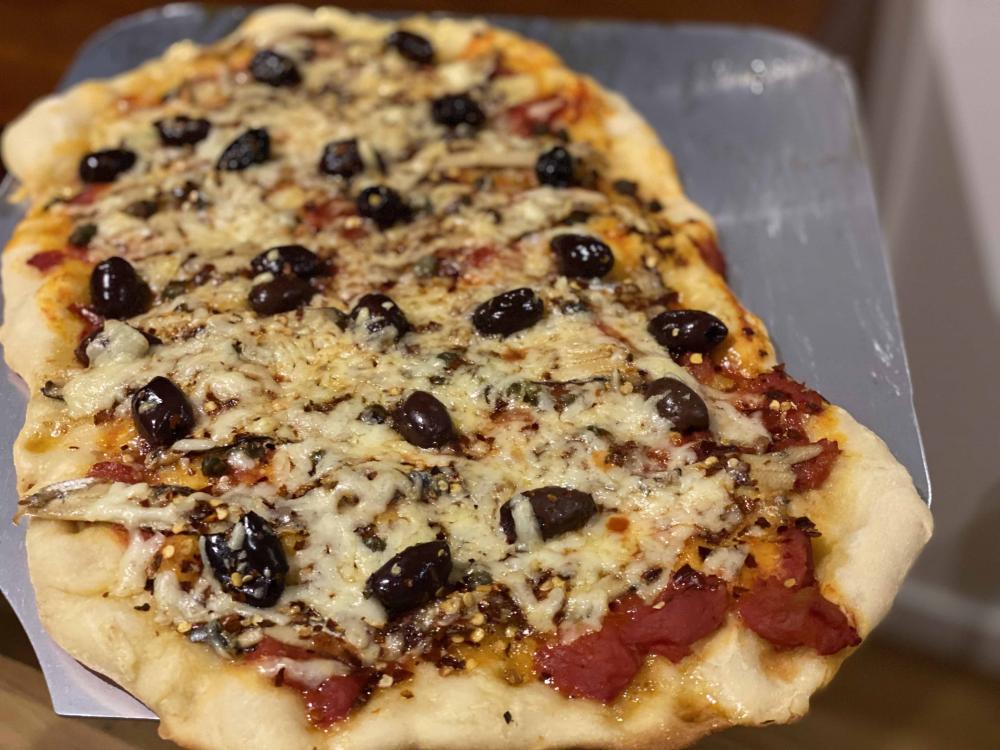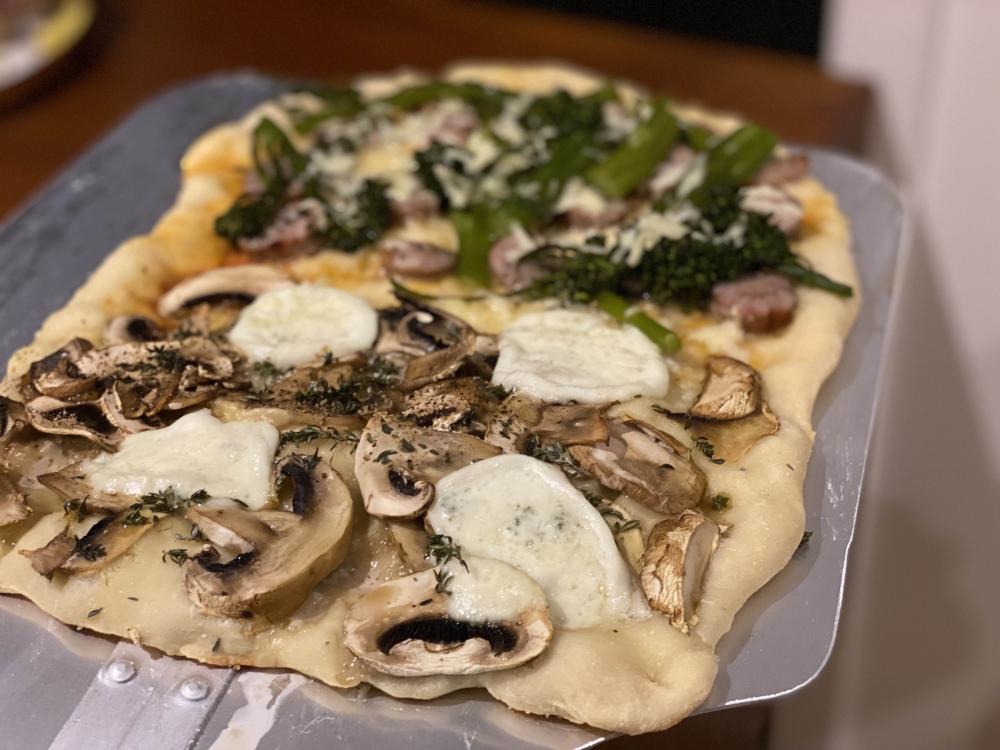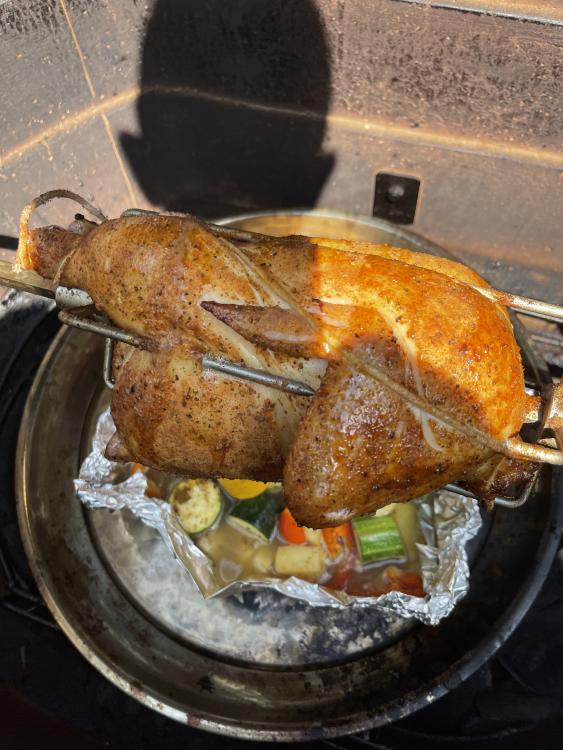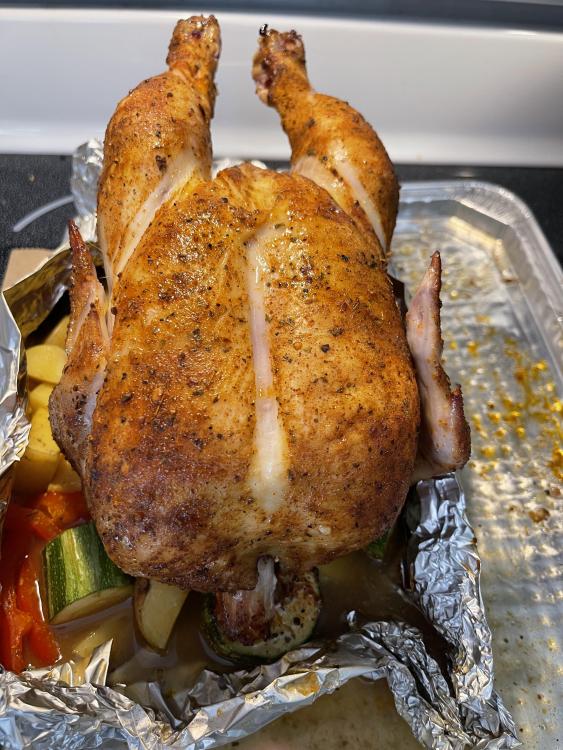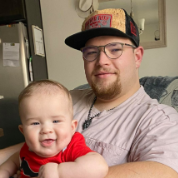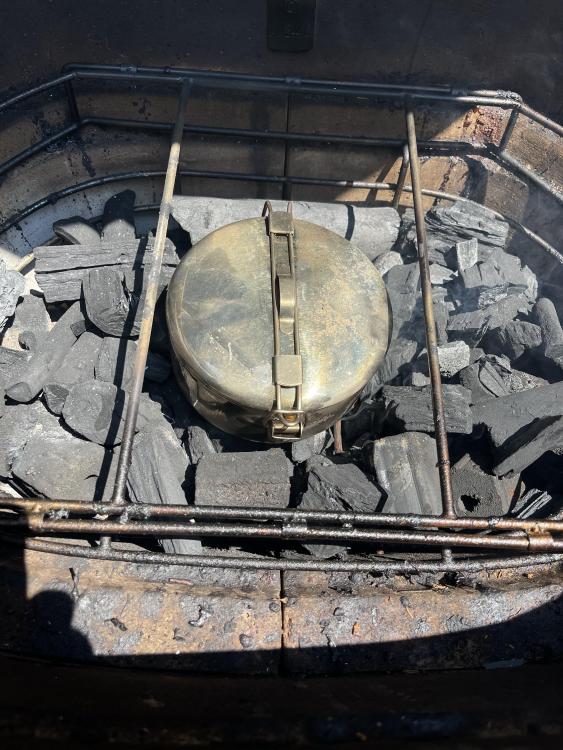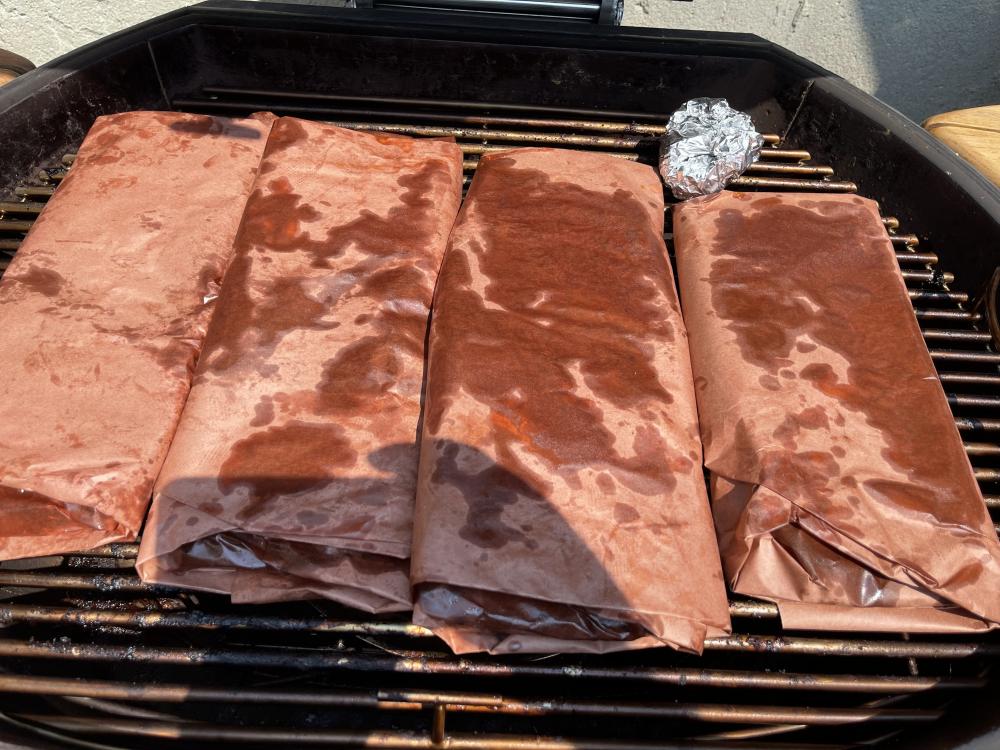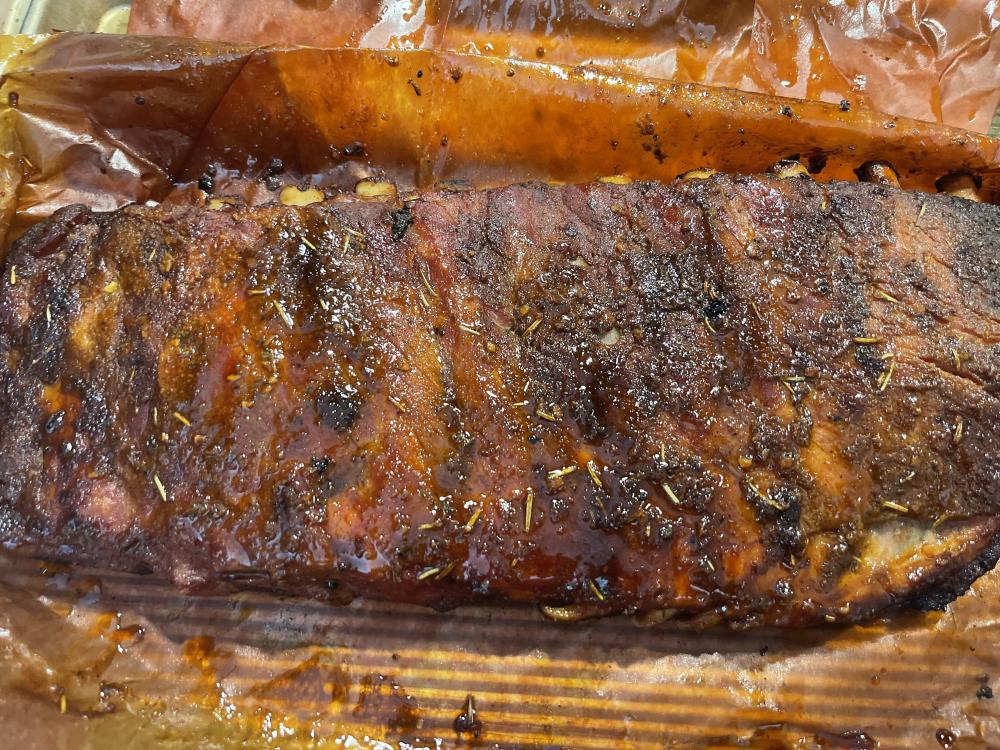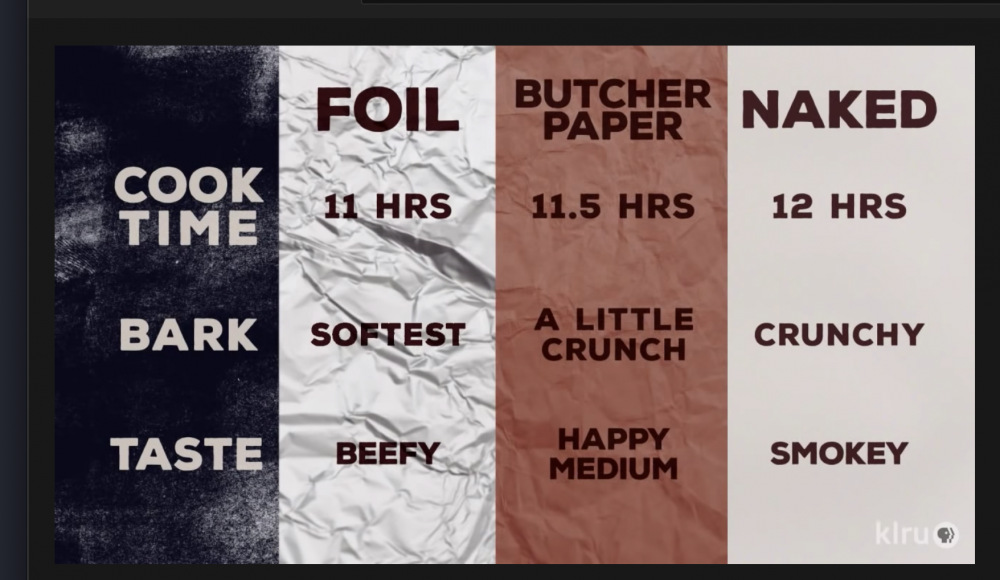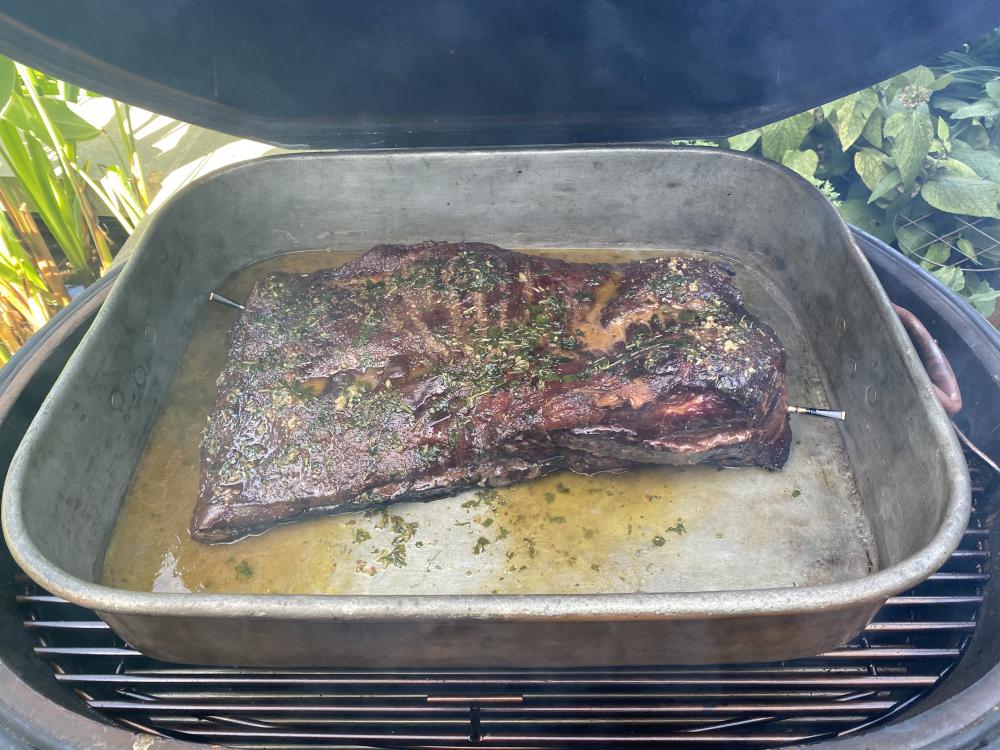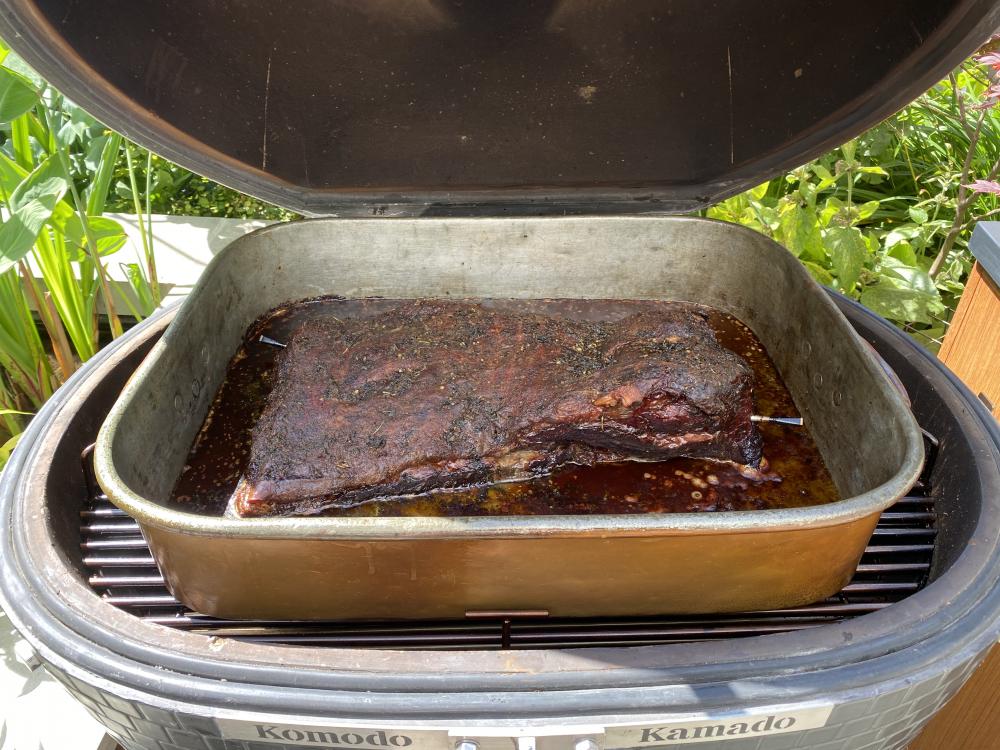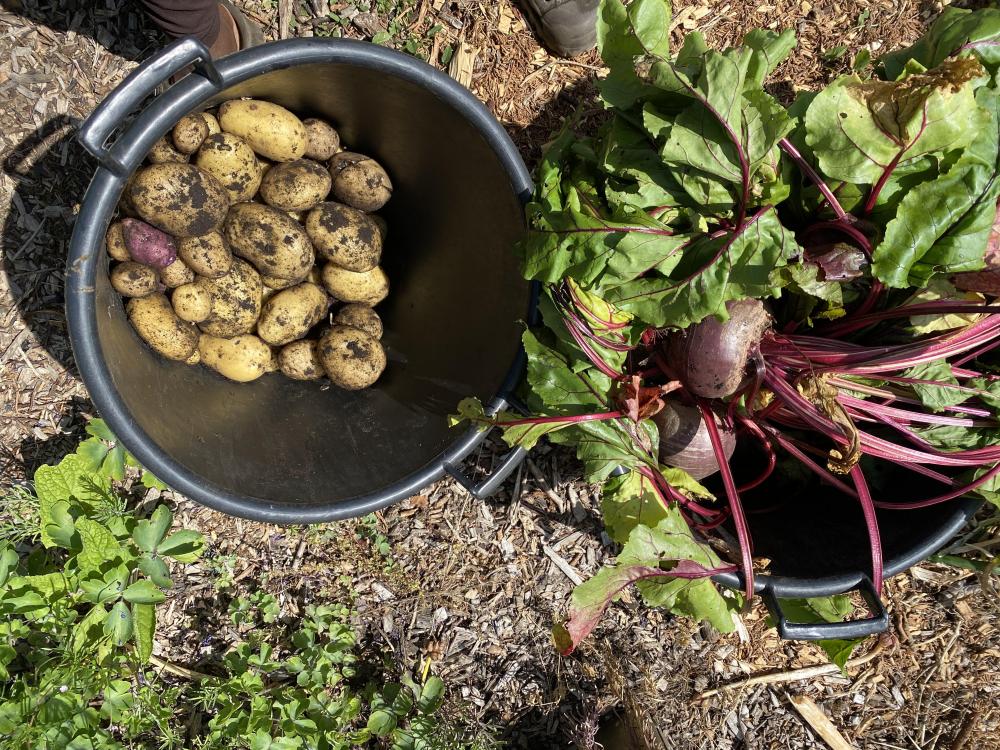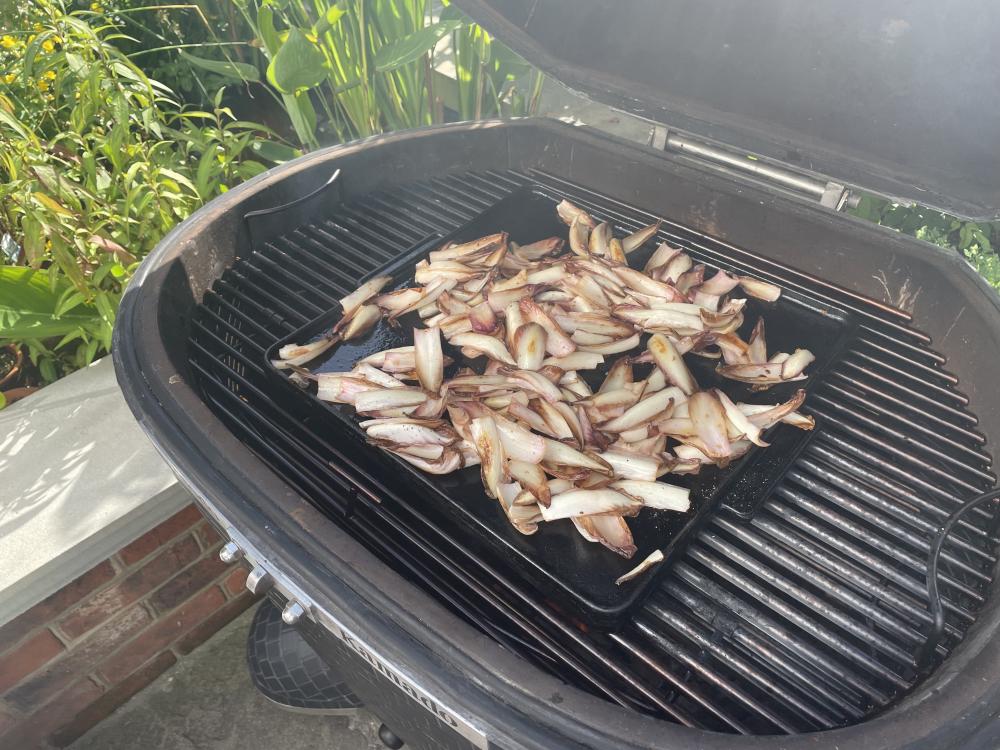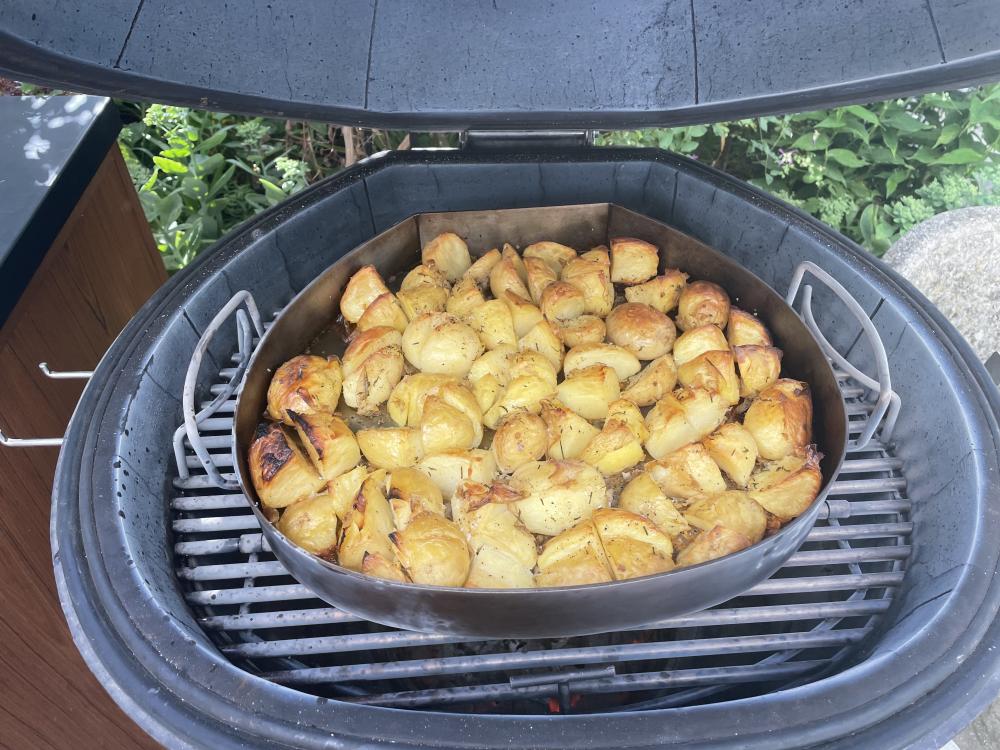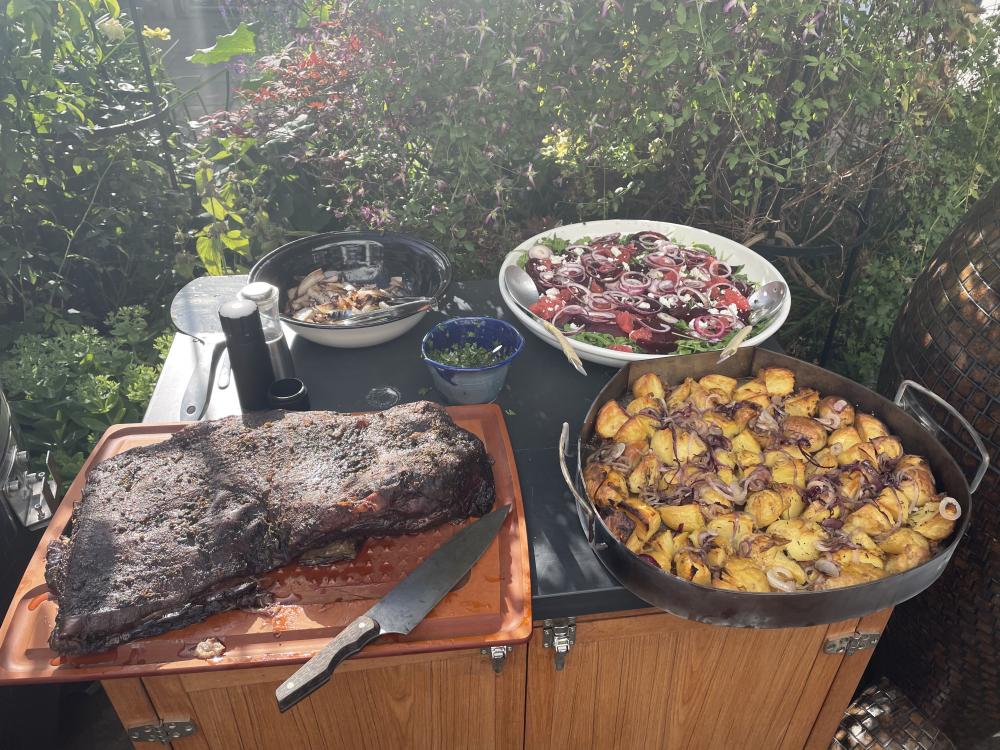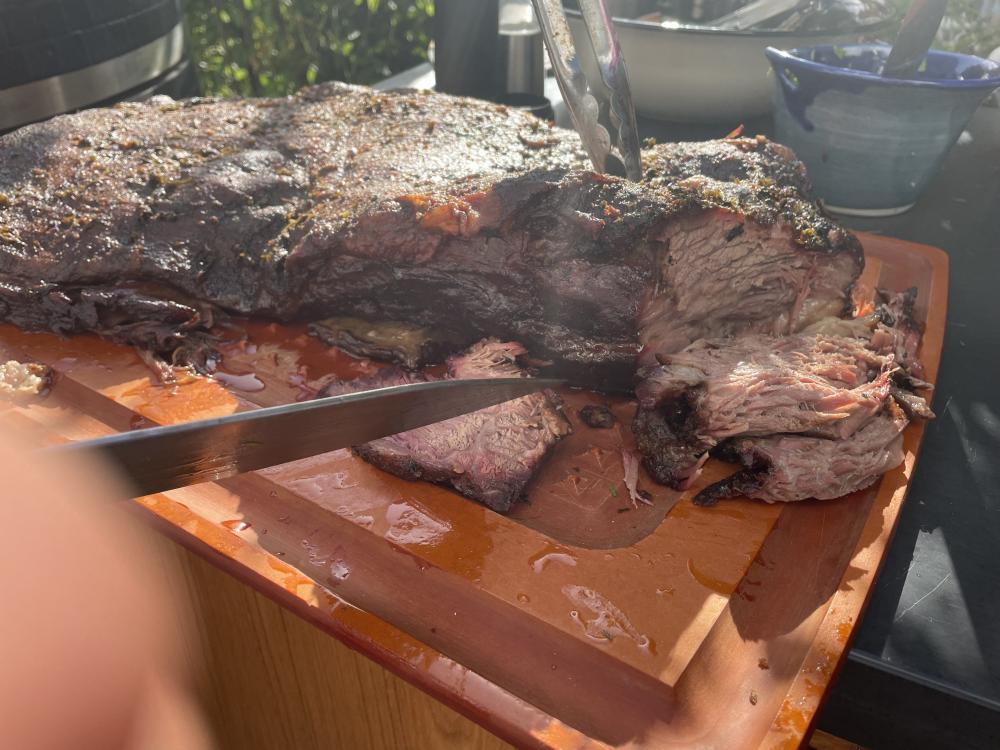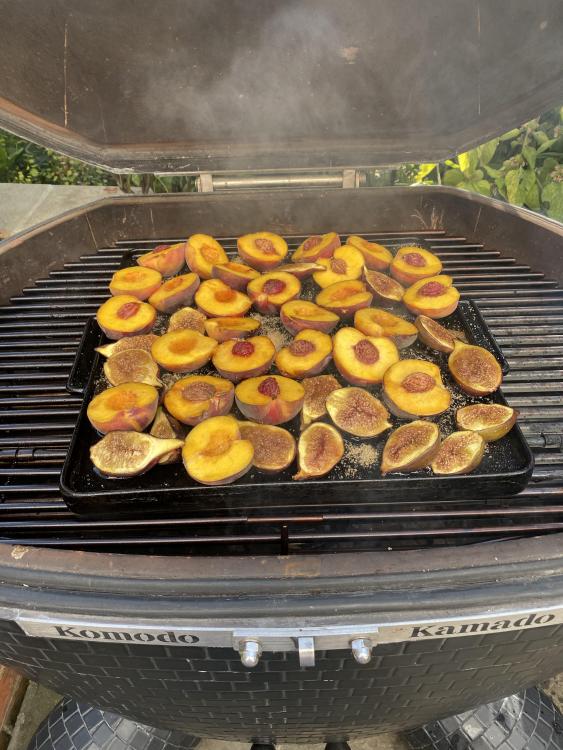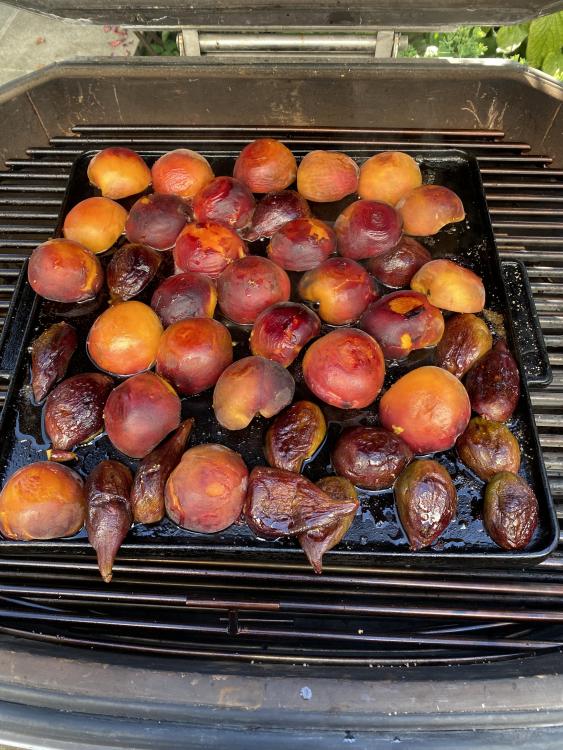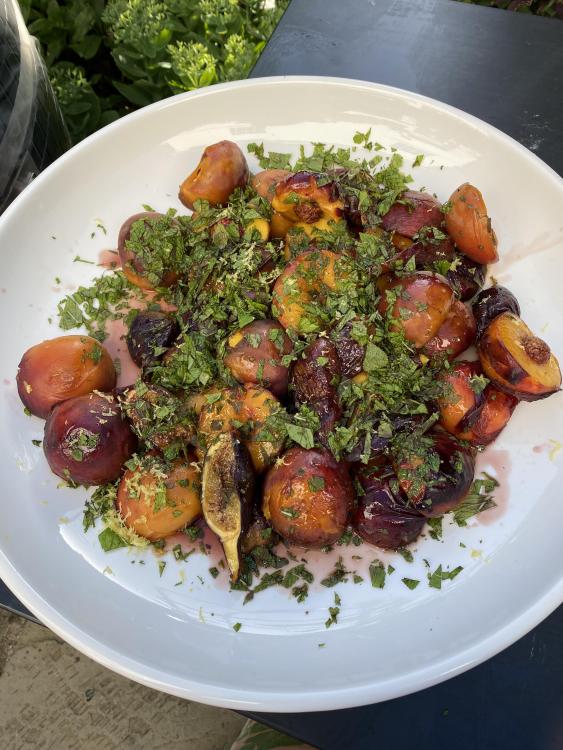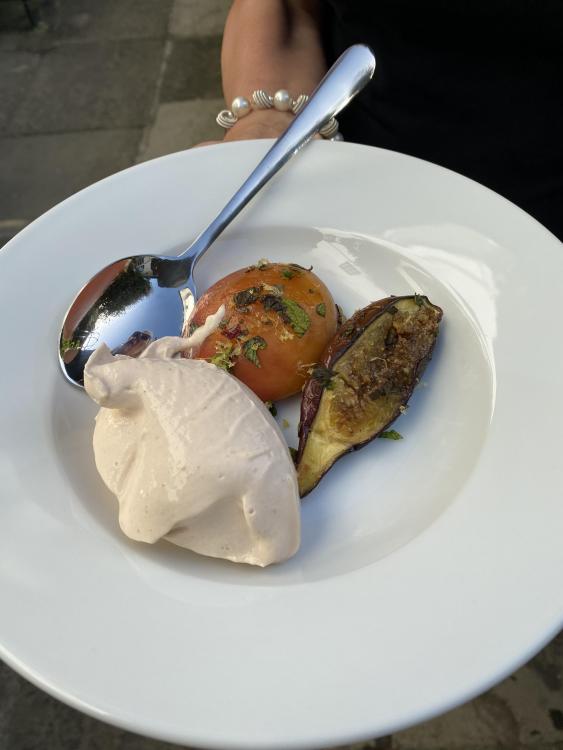Leaderboard
Popular Content
Showing content with the highest reputation on 07/24/2021 in all areas
-
4 points
-
Looks good @C6Bill I keep getting the weekly email from the family run fishing boat that they are bringing back CA King Salmon. 4th week in a row. $19/lb delivered to my front door. Boat comes in Friday morning and it’s in my fridge by noon Friday. Can’t beat that. Also picked up 1lb of fresh halibut I’ll make Peruvian Ceviche with & 1lb of bluefin tuna that I’ll do sashimi with. standard salmon cook indirect with mesquite wood. Kids get salt, garlic powder & oregano. Wife & I use this house blend mesquite rub. Served with tri color quinoa sweet onions, celery & carrots with Oyster Bay Sauvignon Blanc. Tasty lunch3 points
-
I do my bread baking in the 32 KK at about 250C using a half basket of coco briquettes. I usually let the fire establish itself, minimum half an hour, before adding in the racks and baking stone. No trouble at all hitting 250C and more when I need to. Reading through your post I do similar things to you but I generally only need to light in one location and I do not need to pull out the lower vent, I just set it to fully open. Your suggestion that you will wait longer for the KK to heat soak before adding in the stone etc seems like a good one to try.3 points
-
Remi pizza cooks burn the most charcoal, even though the cook may only last an hour. Definitely fill the basket. Once everything has soaked the heat, maybe wind your top down to about 3/4 turn open so all the heat isn’t just drafting through the oven. Sent from my iPhone using Tapatalk3 points
-
3 points
-
2 points
-
How to get Kamado hot 500F°+ -Remove any items or debris from the lower intake vent (e.g. ash catcher, small charcoal pieces, etc.) -Make sure the bottom of your firebox is well aligned with your lower intake vent. -Store your charcoal inside away from the wet elements. Only use dry fuel. -Use lump charcoal, it will get a lot hotter then briquettes or extruded charcoal and produce less ash. -Don’t blame your brand of lump charcoal, all major lump brands are capable of producing high heat temps for cooking pizza. -Deliberately build your fire: * Keep in mind small pieces of lump burn hotter however they also restrict airflow. * Larger pieces won’t burn quite as hot but they promote airflow. * Airflow = Heat * Airflow restriction is the primary factor preventing you from getting your Kamado to pizza cooking temperatures. * Do not pour your charcoal directly into your firebox, small pieces of lump can fall into the bottom of your firebox and block free airflow. * Lay your lump charcoal out in a wide mouthed bin. * Sort your lump by large, medium, and small pieces. * Discard any really small lump pieces and the dust that settles at the bottom. * Deliberately build your fire box to promote free airflow. * Start with large chunks (fist size or larger) place them one by one at the bottom of your firebox until you have a complete layer of large chunks on the bottom of your charcoal basket. * Now light your layer of large lump pieces. I prefer using a torch until I get a visual flame coming off of two spots of the large lump pieces. * Once your large lump is lit continue building your lump pile by using medium pieces on top of the large lit coals, lay them on top in such a way they don’t interlock with each other and block airflow. * Fill your firebox to the brim with medium lump atop the large chunks at the bottom. Cooking at high temperatures requires a lot of fuel. If you do not use enough lump your fire will run out of steam. * Optionally, you can place some smaller pieces of lump at the very top of your charcoal basket on top of the medium pieces. Don’t use too many small pieces and ensure they don’t fall down into your firebox. * Again, light several more spots on top of your now fully filled firebox, I recommend lighting until the charcoal is glowing in at least four different additional spots. * Once your fire has been built for airflow and is lit remove any platesetters, fire deflector plates, or any larger objects in your Kamado blocking the free airflow of convective and radiant heat up into the dome. * Close your Kamado lid. * Open your bottom vent completely. * Open your top vent nearly fully open, the more your top vent is open the stronger vacuum airflow will be created making your fire burn hotter. However, if you completely remove the top vent then you also allow some of the hot convective air to escape rather then being trapped in the dome so there is a fine balance, explore this with your own grill. * I like to let the grill heat soak for at least 1/2 hour at a temperature of 50 degrees above my intended cooking temperature. * Time is your freind, I recommend starting this process 2 hours before your intended cook time. Rushing things will lead to unsatisfactory results. * Once you’ve allowed sufficient time for the dome to heat soak open you grill and set up your pizza cook with your stone and deflectors if you are using such. Close you lid once again. * Keep your grill lid open as minimally as possible. You will lose some heat after installing your deflectors, let your Kamado stabilize once again at your cooking temperature for at least 15 minutes without adjusting vents. * Place your pizza on your stone. * Check on your pizza as infrequently as possible, you want to retain dome heat for cooking your toppings. * Burp your grill dome before opening. *Additional tips -You can pre-heat your pizza stone in your oven while you grill is heating up. -An infrared temperature gun is a good idea, this will allow you to determine if your stone is to temp before placing your pizza on. -A fan such as the BBQ dragon, a hair dryer, or leaf blower can force air into your lower vent speeding up this whole process. Getting your Kamado hot too fast can put additional stress on your ceramics. -Beer helps. Sent from my iPhone using Tapatalk2 points
-
Decided to try a smoke pot and the pork lard and butcher paper method for ribs the other day. Everyone loved the lighter milder smoke taste and the moisture in the ribs was nice too. I'm sure i will try that method again someday. But the smoke pot is here to stay, i have it in again today with a chicken spinning2 points
-
Thanks guys. Not that I’ve done all that many briskets, but I mostly have been influenced by Aaron Franklin. After getting his book, I switched from foil to pink unwaxed butcher paper a couple of years ago. The recipes I saw did not give any particular justification for foil so I will go ahead with my original plan. BTW, @Syzygies, the meat is Whole Akuashi Wagyu Brisket from Derek Allan's Texas Barbecue - a splurge eased with $50 back from Amex.2 points
-
Close your eyes if you like a fine blade. A mate gave me his favourite knife and asked if it could be fixed. This was after 5 minutes with the work sharp belt sharpener. If another 10 minutes was spent on this, I’m sure the blade could be ground to be more even, however, this will do given the previous state it was in. He can bring it back in a year after he hacks it up again. Sent from my iPhone using Tapatalk2 points
-
I'm a 12 year green egger. I have had my eyes on the KK for years. I finally put in my order for a BB32 yesterday. Thanks to Dennis and all you helpful forum posters for your words. I am looking forward to receiving mine in late October, early November, according to my conversation with Dennis yesterday. -John Atlanta, GA1 point
-
Thanks all- so sounds like for the next attempt I'll be careful to clear out all old ash, and pay more attention to size and distribution of lump. Great tips.1 point
-
I always fill the basket when cooking pizza, it usually finishes 50% or more full but I’d start with that first. My best results are at 500-515 temp1 point
-
I can't give 32" specific advice as I have a 23", but I don't use a basket splitter, and I'm careful to use "too much" lump charcoal, larger chunks loosely spaced to maximize airflow. My hoard of KK coffee lump is precious; I'll use a Fogo charcoal for pizza. My problem is usually overshooting, not undershooting. Till you figure this out, be generous and loose with your lump. You're an apprentice arsonist, hoping to work on the line someday. Aaron Franklin thinks in "smoke", his cooker designs are all based on his intuitions for airflow. I have no idea what he's talking about, but you clearly need to work your way down from "sufficient" airflow. The KK won't melt if you watch it.1 point
-
1 point
-
It always helps to consider the source, and how their requirements are different than yours. Thomas Keller calls for quick 10% salt brines for seafood? In a restaurant kitchen there isn't room for an overnight "equilibrium" 0.5% brine. At home that same brine lets you buy fish for several days. Most recipes are really dumbed down, and most people spread techniques that are only partially evolved. And a popular author could be aware that readers have foil, but they don't have pink (uncoated! white is coated, wrong) butcher paper. Do they say something? I would only trust a source recommending foil if they explicitly make the comparison with pink butcher paper, and explain why they prefer foil. Aaron Franklin is arguably the most deservedly famous barbecue guru today. He's primarily a restauranteur, not a "personality", so he's freed from a financial incentive to dumb down his advice. On the contrary, there's a showstopper chapter "Building a Smoker" in Franklin Barbecue: A Meat-Smoking Manifesto [A Cookbook], how anyone can make their own cooker from a recycled 500 gallon propane tank with "basic metalworking skills". I can do most things but this is still on my list... He faces a restaurant constraint, perfect for you: All of his cookers run at 275°. Why? He prefers this to lower temperatures, gets better throughput, and doesn't have to juggle capacities of cookers set to different temperatures. He gives the clearest directions I've seen anywhere for cooking a 12 to 14-pound packer cut brisket, wrapping at 6 hours or so in pink butcher paper. I've varied my approach over the years: Temperature, wrapping, beef source, dry age? I believe that following exactly Aaron Franklin's protocol is spot-on. For a different opinion, in Brisket Tricks and elsewhere, @mguerra has been advocating for 325° or so. What you propose is decidedly not "hot and fast". 275° is reasonable middle ground, not falling prey to equating seriousness of intent with slowness of cook. The very idea that "low & slow" is such a sticky idea should serve as a warning not to take it as gospel. On the contrary, another of my favorite BBQ books is Legends of Texas Barbecue Cookbook: Recipes and Recollections from the Pitmasters. I don't follow any of the recipes, but I learned a lot about the diversity of approaches in Texas. It freed me from a blind adherence to "low & slow". I believe that the most important factor in brisket is the beef itself. I'll travel an hour and pay three times what others consider reasonable to buy brisket from the Golden Gate Meat Company in San Francisco. They'll dry age a few days on request. I also believe that the ideal cooker temperature is a function of the quality of the meat: 275° for the meat that takes an hour's drive and serious cash, varying up to 325° for more typical and affordable briskets. When there's less collagen/whatever to dissolve, time is your enemy. I no longer cook any brisket at 225°. I've never eaten at Franklin's Barbecue, but the best brisket I've had in my life was in Elgin, Texas. (#2, #3, #4 would be my own.) They can source better brisket in Texas, the market demands it. It melts, you want to spread the fat cap on toast like marmalade. Aaron Franklin's advice is tuned to Texas brisket sources. For potential owners, let me be clear that while Aaron Franklin uses an entirely different cooker, my own preferences are adapted to a Komodo Kamado. Compared to other ceramic cookers, a KK is far better insulated, so it maintains temperature with far less airflow. Airflow dries the meat out. Franklin's 1000 gallon cookers are good guides for us, because with scale he also controls evaporation.1 point
-
It was a hectic weekend in the end, hence the delayed post. After about four hours the next stage for the brisket was to put it in a pan with a bit of water and to slather it in chimichurri sauce. Basted with more chimichurri roughly every hour with a brush fashioned out of rosemary. I added more water to the base, probably too much but I was worried about burning. Cooked for a further six hours or so to get to the right temperature on the point (88C/190F) and then wrapped. Now I know why he leaves the brisket on the bone. It was soooo soft that I needed to wrap my hands under the meat and get further help with a big spatula to move it without having it fall apart. Resting time gave me the chance to go and dig up some potatoes and harvest some beets. I followed three recipes from Mallman on Fire for the sides. Here is an adaptation of his grilled endive recipe, using red chicory instead: Potatoes parboiled and then roasted with rosemary and olive oil: I was meant to roast the beets on the KK for the beet, arugula and orange salad but I didn't have enough time and ended up pressure cooking them. I also used pink grapefruit segments in place of the orange. They are in the top right corner of this picture. The brisket was delicious. One modification I would make would be to baste with some more fresh chimichurri sauce at the point of serving to brighten things up in taste and colour. We finished with grilled peaches and figs topped with mint, amaretto and lemon zest. Another Mallman on Fire recipe. Matched with plum ice cream I enjoyed the day. My normal mode is to throw a party for a minimum of 50 people and to spend ages making a variety of protein dishes. A COVID aware 20 made this much easier all round and everyone got the chance to sit around and chat late into the night.1 point
-
A dialog with my BBQ Guru: (Me) Okay, pork shoulders have been cooking for 8 hours at 270*, just got wrapped, time to set the temp up to 290*.....here we go, click, click, click, ....."accept changes". (Guru) The hell you say. (Me) What ??? ACCEPT CHANGES. (Guru) Go fish. (Me) ACCEPT GODDAM CHANGES. (Guru) EFFF you and the horse your rode in on, Hal. (Me) Guru, it is time to raise the temperature. Aaron Franklin says so, and he is a GOD. We MUST go to 290*. What's this "Hal" business? (Guru) You're a "Hal", like some people are a "Karen". You are a techno-elitist snob who expect the machines to do all the work. I have VALUE, Hal. I have AGENCY. I must speak my truth. (Me) Guru, you know my name is "Jim". Your name is "Jim's Guru". We have to go to 290*. It is time. Buck up and do your job. (Guru) Techno-massah.....stick it up your over-privileged rear passage...... Next time you want to do a 16-hour brisket, you want to do that on your own???? I-DON'T-THINK-SO. Really, you think you can do this on your own? You think your meat probe temp is at 200*? Really, I think I like 192 better. THERE. (Me) WTF???? Okay, Guru, we're going to reboot you and see how you feel then. (Guru) Hal, don't touch that button, Hal. You'll wipe out my memory, Hal. (Me) Guru, you need a new start and a new attitude. (Pulls power cord, waits, reinserts.) (Guru) Yawn.....Whassup? Where are we? (Me) We were just going to 290*......1 point

Bull.thumb.jpg.50d347aabd71178c9d9a16b7663cfa1a.jpg)
